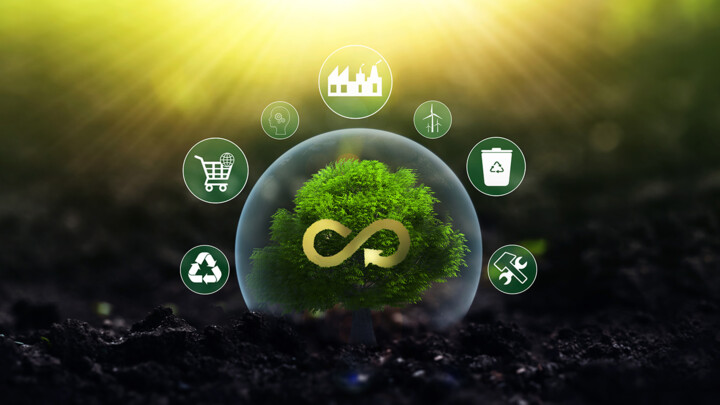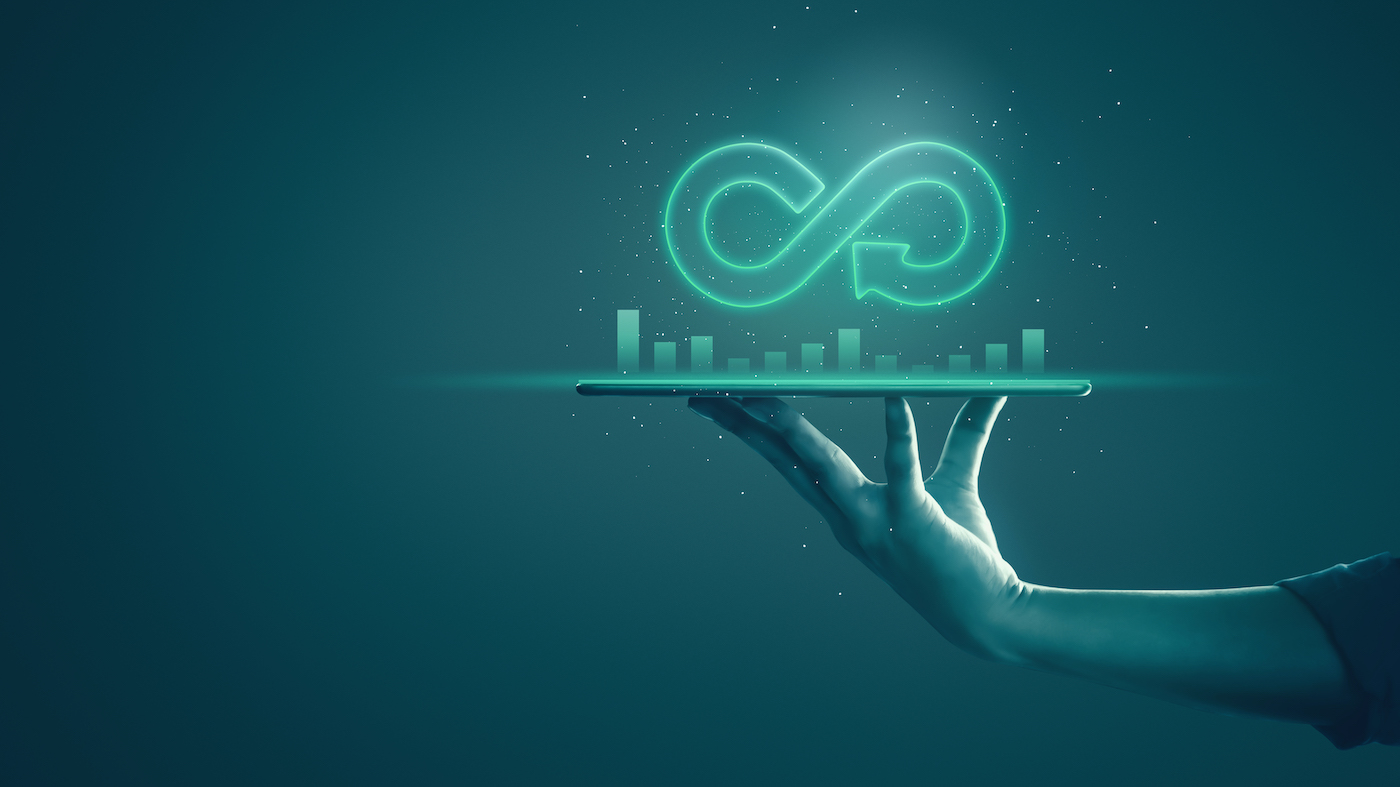Tech’s Next Revolution: How the Circular Economy is Shaping the Future
In today’s rising tide of e-waste, a pathway towards sustainability is essential: As Rafael Dada from Janado explains, shifting towards a Circular Economy which embraces refurbished tech is a highly tangible strategy.

© Galeanu Mihai | istockphoto.com
Swipe, tap, trash: The hidden cost of consumer tech
In a world where technology endlessly evolves, each swipe on our screens not only enriches our lives but makes the everyday simpler and more engaging. Yet, this digital allure comes with a hidden cost – a growing mountain of electronic waste. The year 2019 witnessed a staggering 53.6 million tons of e-waste globally, with Asia, the Americas, and Europe as the leading contributors. Alarmingly, only 17.4% of this e-waste was properly collected and recycled.[1] Particularly, consumer electronics pose a serious challenge: In Germany alone, nearly 300 million unused devices such as smartphones, tablets, and laptops are tucked away in households.[2]
As the wheels of technological evolution keep turning, upcoming advancements like the Internet of Things (IoT), 5G, autonomous systems, and artificial intelligence are expected to further fuel the demand for new devices and infrastructures. The data is eye-opening: every year, 50 million tons of e-waste are produced, and if left unchecked, this number could skyrocket to over 120 million tons by 2050. [3]
The rising tide of e-waste calls for a sustainable approach. Our current model of consumption and disposal is unsustainable. We need new strategies to continue advancing technologically without straining our planet. Here, the Circular Economy surfaces as a promising solution, paving the way towards a sustainable tech revolution.
Circular Economy: From waste reduction to smartphone refurbishing
The Circular Economy offers a fresh departure from the traditional linear model, trading the old ‘take-make-dispose’ mantra for a smarter, more sustainable approach. It’s all about stretching the life of products and materials, keeping them circulating in the economy for as long as possible, and managing them wisely when their primary service life ends.
Fast forward to 2023, and the need for such a shift is glaring. Global circularity has slid down to a concerning 7.2% from 8.6% in 2020.[4] This decline underscores a growing dependence on new materials, casting a long shadow on our environment. The Circular Economy emerges as a compelling response to this challenge, fostering business models like smartphone refurbishing, which spotlight sustainability and resource efficiency.
The potential impact of this shift is well illustrated in the plastics sector. The UNEP Report 2023 suggests that embracing reuse systems could slash plastic pollution by 30% by 2040, with ramped-up recycling chipping in an extra 20% reduction.[5]
This drive to lessen our environmental footprint is not just good for the planet; it’s also opening doors to new business ventures and job creation, all in line with a greener future. By promoting refurbishment and recycling, the Circular Economy is carving a pathway toward sustainable technological advancement, showcasing a viable strategy to confront e-waste challenges and to frame our tech future in a sustainable mold.
Janado’s journey: Circular Economy in action
As we shift towards a Circular Economy, the tech industry is discovering a green pathway to meet our ever-growing desire for the latest electronics, while still maintaining sustainability. Standing at the forefront of this eco-conscious shift is Janado, mastering the art of refurbishing premium devices. A recent study conducted by Refurbed and Fraunhofer Austria highlighted the environmentally friendly impacts of refurbished products, showcasing a promising picture for the sector.
By opting for refurbished tech, consumers can significantly contribute to resource conservation. For instance, a refurbished Samsung S20 FE cuts down 56.9 kg of CO2, dodges 142 g of electronic waste, and saves 11,010 liters of water. Likewise, going for a refurbished MacBook Air 13.3” saves 281.3 kg of CO2, avoids 1286 g of electronic waste, and conserves 51,468 liters of water.[6]
Janado’s approach is clear and meticulous: acquire unused electronics from various companies and refurbish them through thorough inspection, cleaning, and repair. This not only conserves valuable resources but also curtails the demand for new products. It’s an attractive model for firms aiming to enhance their corporate social responsibility by finding sustainable solutions for their excess technology. In doing so, they actively contribute to reducing electronic waste and lessening its environmental impact.
Janado’s work goes beyond just refurbishing; it’s a shining example of how companies can step into the Circular Economy. It’s about looking ahead, with plans to expand the principles of the Circular Economy into other product areas. Jan Rubinski, the CEO, captures Janado’s mission well: “At Janado, we chase value, not just the new. Each refurbished device is a step towards sustainable tech evolution – making premium technology accessible, all while protecting our planet.”
Janado’s story highlights that sustainable business models are not only environmentally smart but also economically viable. It opens doors to explore the Circular Economy’s potential, promising a positive impact well beyond the tech industry.
Beyond the horizon: The Circular Economy’s tech frontier
The Circular Economy isn’t merely an antidote to our environmental challenges; it’s a catalyst for the next tech revolution. In the tech arena, it introduces a blueprint to prolong product lifespans while nurturing innovation. Through refurbishing and recycling electronics, companies like Janado utilize precious resources, substantially minimizing e-waste.
This sensible approach to resource management goes hand in hand with innovative concepts like Dematerialization, further driven by advancements in Cloud Computing and IoT. It reduces the physical presence of devices while maintaining access to advanced tech. Here’s where Device-as-a-Service (DaaS) models come into play. DaaS is transformative: it transfers ownership from individuals to manufacturers, who now oversee a product’s entire lifecycle. Envision a scenario where manufacturers, not consumers, are responsible for materials. They track, manage, recycle, and transform old into new with a level of efficiency that’s beneficial for both the economy and the environment.[7]
The alliance between the tech sector and the Circular Economy is a collective endeavor. We all have a part to play – by opting for refurbished devices and recycling the old, we contribute to a larger, eco-friendly narrative. But companies are the main actors here: by partnering with refurbishing firms and embracing groundbreaking concepts like dematerialization, they’re realigning their business models to resonate with Circular Economy principles. This adjustment not only mitigates environmental impacts but also fosters innovative solutions that could reshape the tech sector.
Rafael Dada is Content Manager at Janado and has a background in Political Science. He communicates the essence of refurbishing and the Circular Economy, showcasing how Janado makes tech sustainability attainable.
[1] Forti, V., Baldé, C. P., Kuehr, R., & Bel, G. (2020). The global e-waste monitor 2020. United Nations University (UNU), International Telecommunication Union (ITU) & International Solid Waste Association (ISWA), Bonn/Geneva/Rotterdam, 120. Retrieved from LINK.
[2] Bitkom e.V. (2022). Smartphones, Tablets, Laptops: Fast 300 Mio. Alt-Geräte in deutschen Haushalten. Press statement by Nina Paulsen, press officer. Berlin, 14 December 2022. Retrieved from LINK.
[3] Ryder, G., & Houlin, Z. (2019). The world’s e-waste is a huge problem. It’s also a golden opportunity. In World Economic Forum. Retrieved from LINK.
[4] Circle Economy. (2023). The Circularity Gap Report 2023 (pp. 1-64, Rep.). Amsterdam: Circle Economy. Retrieved from LINK.
[5] UN Environment Programme (UNEP) Authors: Fletcher, S., March, A. L. A., Roberts, K., Shirian, Y., i Canals, L. M., Cairns, A., ... & Bass, A. (2023). Turning off the Tap: How the world can end plastic pollution and create a circular economy. Retrieved from LINK.
[6] Refurbed GmbH. (2023). Sustainability Impact Measurement. Edited by Tania Nemeth, Maximilian Nowak, and Paul Rudorf. Fraunhofer Austria Research GmbH. Vienna. Retrieved from LINK.
[7] Ryder, G., & Houlin, Z. (2019). The world’s e-waste is a huge problem. Retrieved from LINK.
Please note: The opinions expressed in Industry Insights published by dotmagazine are the author’s or interview partner’s own and do not necessarily reflect the view of the publisher, eco – Association of the Internet Industry.





